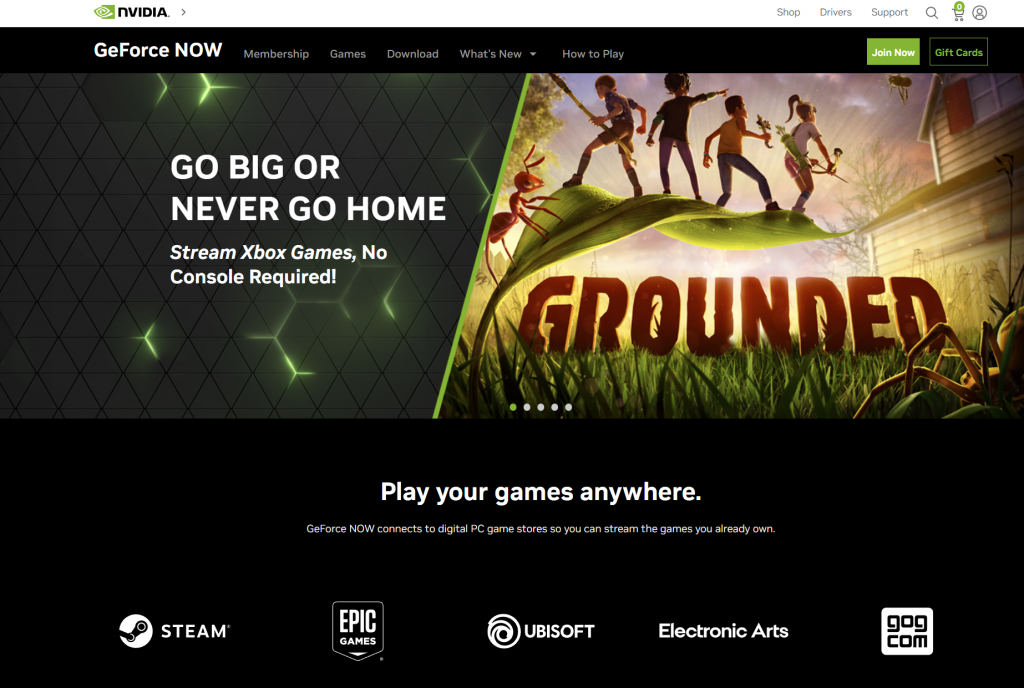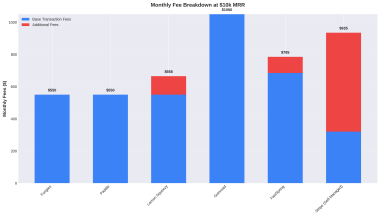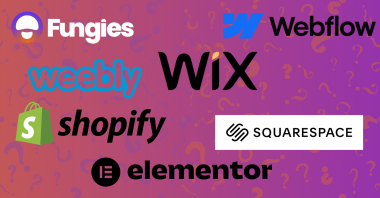Cloud gaming has emerged as a transformative force in the realm of interactive entertainment. With the rapid advancement of internet technology and digital infrastructure, traditional gaming paradigms are shifting towards a more accessible and flexible approach. In this comprehensive article, we will delve into the concept of cloud gaming, explore its significance, and analyze its immense potential for the future of gaming. Furthermore, we will examine various notable cloud gaming platforms, including the highly anticipated Steam Deck, and discuss their impact on the evolving gaming landscape.
I. Understanding Cloud Gaming
1.1 Definition and Mechanism of Cloud Gaming: Cloud gaming, also referred to as gaming on demand or gaming as a service (GaaS), is a revolutionary model that enables games to run on remote servers and be streamed to users over the internet. This approach eliminates the need for dedicated gaming hardware, as players can interact with the games through a wide array of client devices such as smartphones, tablets, computers, and smart TVs. The processing power and storage requirements are handled by powerful servers housed in data centers, while players receive a seamless streaming experience.
1.2 Advantages of Cloud Gaming: Cloud gaming offers numerous advantages, transforming the way players access and enjoy their favorite games. These advantages include:
- Accessibility and Convenience: Cloud gaming allows users to access their preferred games from various devices, anytime and anywhere, without the need for expensive gaming hardware.
- Lower Entry Barrier: Users can engage in high-quality gaming experiences without purchasing expensive gaming consoles or upgrading their PCs.
- Flexibility: Cloud gaming enables players to seamlessly switch between different devices, picking up their game progress from where they left off.
- Instant Play: With no lengthy downloads or installations required, games are streamed directly to the player’s device, enabling instant play.
- Scalability: Cloud gaming platforms can handle a large number of players simultaneously, providing seamless multiplayer experiences.
II. Evolution and Growth of Cloud Gaming
2.1 Historical Overview: Cloud gaming has its roots in the early 2000s when pioneering services like OnLive and Gaikai introduced the concept. However, limited internet speeds and infrastructure constraints hindered widespread adoption during that time. As technology advanced and internet connectivity improved, companies such as NVIDIA (GeForce Now), Google (Stadia), and Microsoft (Project xCloud) entered the market, accelerating the growth of cloud gaming.
2.2 Current State and Market Adoption: The current state of cloud gaming showcases significant growth and adoption. With the proliferation of 5G networks, increased broadband speeds, and advancements in video compression technology, cloud gaming platforms have become more accessible and feasible. Major industry players are investing heavily in cloud gaming infrastructure and forging partnerships to tap into this burgeoning market.
III. Prominent Cloud Gaming Platforms
3.1 Google Stadia: Launched in 2019, Google Stadia has emerged as one of the leading cloud gaming platforms. It offers a diverse range of games, including AAA titles, and provides players with the ability to enjoy gaming experiences across multiple devices, including smartphones, computers, and smart TVs. Leveraging Google’s vast infrastructure, Stadia delivers high-quality streaming experiences to its users.
3.2 NVIDIA GeForce Now: NVIDIA GeForce Now is another popular cloud gaming platform that harnesses the power of NVIDIA GPUs to stream games directly to players’ devices. It supports an extensive library of games, including titles purchased from popular platforms such as Steam and the Epic Games Store, granting players access to their existing game collections.

3.3 Microsoft xCloud (Now part of Xbox Cloud Gaming): Microsoft xCloud, now integrated with Xbox Cloud Gaming, provides a compelling cloud gaming service. With the subscription-based Xbox Game Pass Ultimate, players can enjoy a vast library of games on various devices, including Xbox consoles, PCs, and mobile devices. The integration with Xbox Live allows for seamless multiplayer experiences.
3.4 Steam Deck and Steam Cloud Gaming: Steam, the leading PC gaming platform, has made an exciting entry into the cloud gaming landscape with the highly anticipated Steam Deck handheld device. The Steam Deck combines the portability of a handheld console with the extensive game library available on Steam. It allows users to stream their entire Steam library to the device, providing an immersive and portable gaming experience.

IV. The Future of Cloud Gaming
4.1 Advancements in Technology: Continual advancements in internet infrastructure, including the widespread adoption of 5G networks, will significantly enhance the capabilities of cloud gaming. Reduced latency, higher bandwidth, and improved video compression technologies will enable near-instant responsiveness, high-fidelity graphics, and immersive gameplay, bridging the gap between traditional gaming and cloud-based gaming.
4.2 Competitive Landscape and Market Expansion: The competitive landscape of cloud gaming is expected to intensify as more companies enter the market and enhance their offerings. Industry giants such as Amazon and Tencent have already entered the space, demonstrating the potential for significant market expansion. This increased competition will result in better services, broader game libraries, and more affordable pricing models for consumers.
4.3 Integration with Emerging Technologies: Cloud gaming is likely to integrate with emerging technologies such as virtual reality (VR) and augmented reality (AR), enhancing immersion and interactivity in gaming experiences. Additionally, advancements in artificial intelligence (AI) and machine learning (ML) will optimize game streaming, reduce latency, and improve overall performance, further enhancing the cloud gaming experience.
4.4 Impact on Game Development and Business Models: Cloud gaming presents new opportunities for game developers and publishers. Developers can focus on creating games without the constraints of hardware limitations, reaching a wider audience. Additionally, cloud gaming allows for innovative business models, such as subscription-based services and free-to-play games, creating new revenue streams for the industry.
V. Game Distribution in a Cloud Gaming Era
5.1. Digital-Only Platforms
In a cloud gaming future, the dominance of digital-only platforms will become even more pronounced. Traditional physical copies of games will be replaced by digital downloads and streaming services. Players will access game libraries through online platforms that offer a wide range of titles, catering to different genres and preferences. These platforms will provide seamless access to games, allowing users to instantly start playing without lengthy downloads or installations.
5.2. Subscription-Based Models
Cloud gaming will likely see a surge in subscription-based models. Players can subscribe to gaming services, gaining access to a vast catalog of games for a monthly fee. This model offers greater flexibility and affordability, as players can enjoy a wide variety of games without the need for individual purchases. Subscription services such as Xbox Game Pass, PlayStation Now, and Google Stadia Pro are already paving the way for this future by offering access to a growing library of games for a fixed price.
5.3. Streaming as the Primary Distribution Method
Streaming games directly from the cloud will become the primary distribution method. With cloud gaming, players can instantly access games without the need for large downloads or updates. Game files will reside in remote servers, allowing for faster and more efficient access. This will eliminate the need for physical copies or digital downloads, reducing storage requirements and streamlining the gaming experience.
VI. Benefits and Challenges of Cloud Gaming Distribution
6.1. Benefits
Cloud gaming offers several benefits in terms of game distribution:
a. Accessibility: Cloud gaming allows players to access their favorite games from a wide range of devices, including smartphones, tablets, PCs, and smart TVs. This accessibility breaks down barriers and enables gaming on various platforms, making it more inclusive and convenient.
b. Instant Availability: With cloud gaming, games are instantly available to play, eliminating the waiting time for downloads or installations. Players can jump into their favorite titles without any delay, enhancing the overall gaming experience.
c. Cross-Platform Compatibility: Cloud gaming enables seamless cross-platform compatibility. Players can start a game on one device and continue playing on another, maintaining progress and achievements across multiple platforms. This flexibility adds a new dimension to gaming, enabling users to enjoy uninterrupted experiences.
6.2. Challenges
Despite the numerous benefits, cloud gaming also faces a few challenges in terms of game distribution:
a. Internet Infrastructure: Cloud gaming heavily relies on robust internet infrastructure. In regions with limited connectivity or slower internet speeds, accessing and streaming games may pose challenges. However, as internet infrastructure continues to improve globally, this challenge is gradually being overcome.
b. Latency and Input Lag: One of the primary concerns with cloud gaming is latency and input lag. As games are streamed from remote servers, the time taken for user inputs to be registered and the corresponding actions to be reflected in-game can be slightly delayed. While advancements in technology are mitigating this issue, minimizing latency remains a priority for a seamless gaming experience.
c. Ownership and Control: Cloud gaming raises concerns regarding ownership and control of games. As players rely on streaming services, they are dependent on the availability and sustainability of these services. If a service shuts down or removes a particular game from its library, players may lose access to their purchased titles. Striking a balance between the convenience of cloud gaming and the ownership of games will be crucial in the future.
VII. Evolving Game Distribution Strategies
7.1. Cross-Platform Integration
Cloud gaming will facilitate greater cross-platform integration. Players will have the freedom to switch between different devices seamlessly, allowing for a consistent gaming experience across platforms. This integration will be driven by cloud-based save states, ensuring that progress, achievements, and personalized settings are synchronized across devices.
7.2. Game Streaming as a Marketing Tool
Game developers and publishers will increasingly leverage game streaming as a marketing tool. By allowing players to stream a portion of a game for free, developers can showcase their titles to a broader audience. This “try before you buy” approach can enhance game discovery and attract new players, ultimately driving sales and engagement.
7.3. Personalized Recommendations
Cloud gaming platforms will leverage advanced algorithms and machine learning techniques to provide personalized game recommendations. By analyzing a player’s gaming preferences, play history, and social interactions, platforms can offer tailored suggestions for new games. This targeted approach will enhance the game discovery process, ensuring that players are exposed to titles that align with their interests.
Conclusion
Cloud gaming has transformed the gaming landscape, making high-quality gaming experiences more accessible and convenient for players worldwide. The emergence of platforms such as Google Stadia, NVIDIA GeForce Now, Microsoft xCloud, and the highly anticipated Steam Deck showcases the immense potential of cloud gaming. As technology continues to advance, cloud gaming will become an integral part of the gaming industry, providing seamless experiences across various devices and ushering in a new era of interactive entertainment.





